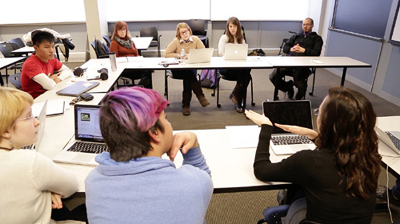The students have shared their course work so that you can see the steps and iterations that led to the creation of their final projects.
- Kenneth Cheah’s Project
- Joshua Cheong’s Project
- Andrea Desrosiers’ Project
- Nathan Hernandez’s Project
- Yulia Klochan’s Project
- David Yam’s Project











